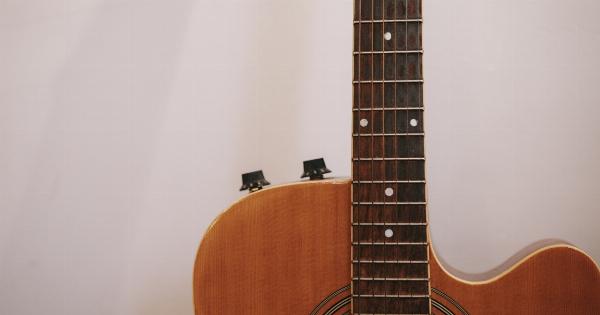Concerts are an exciting and exhilarating experience, capturing the essence of music and live performances.
However, amidst the loud cheers and amplified sound systems, it is crucial to recognize the potential dangers these concerts pose to our hearing health. Attending ear-disrupting concerts without proper protection or precautions can lead to irreversible hearing damage or even permanent deafness.
This article aims to shed light on the hearing dangers associated with ear-disrupting concerts and highlight the importance of taking proactive measures to safeguard our auditory well-being.
The Deafening Sound Waves
The primary concern with ear-disrupting concerts is the intensity and volume of the sound waves generated. The decibel levels at concerts can reach alarming heights, often exceeding the safe limit of 85 dB.
Rock concerts, music festivals, and electronic dance music (EDM) events are notorious for their amplification systems that push the boundaries of sound reproduction. These excessive sound levels can prove detrimental to our delicate hearing mechanism, causing short-term and long-term damage.
Immediate Effects of Loud Music
Exposure to loud music for an extended period or even a single instance can result in immediate hearing disturbances. These effects include temporary hearing loss, ringing in the ears (tinnitus), and a feeling of fullness or pressure in the ears.
While these symptoms may subside after a while, their occurrence is indicative of the inner ear’s vulnerability to the intense sound energy emitted during concerts.
Hidden Long-Term Consequences
While immediate effects are concerning, the hidden dangers lie in the long-term consequences of repeated exposure to loud music.
Prolonged exposure to high decibel levels can lead to irreversible damage to the auditory system, potentially causing noise-induced hearing loss (NIHL). NIHL is a gradual and permanent hearing impairment that impairs one’s ability to hear sounds at different frequencies and volumes.
The Threat of Tinnitus
Tinnitus, often described as a persistent ringing, buzzing, or roaring sound in the ears, is a common condition among concert-goers who expose themselves to ear-disrupting concerts without adequate ear protection.
This condition can significantly impact one’s quality of life, leading to sleep disturbances, difficulties in concentration, and even psychological distress. The incessant presence of tinnitus serves as a reminder of the irreversible damage inflicted upon the auditory system due to neglecting hearing protection measures.
Harm to Hearing Health
The delicate structure of our ears, particularly the hair cells in the inner ear, is susceptible to damage caused by excessively loud noise.
These hair cells are responsible for converting sound waves into electrical signals that our brain interprets as sound. When exposed to loud music, the sound energy can cause the hair cells to become overworked, leading to their damage or destruction. Once these hair cells are damaged, they cannot regenerate, resulting in permanent hearing loss.
Preventive Measures for Concert-goers
It is essential for concert-goers to prioritize their hearing health and take proactive measures to protect their ears during ear-disrupting concerts. Here are some preventive measures that can significantly reduce the risk of hearing damage:.
1. Earplugs
Wearing high-quality earplugs specifically designed for concerts and loud events can significantly attenuate the intensity of the sound waves entering the ears.
These earplugs are designed to reduce the decibel levels while preserving the overall sound quality and clarity, allowing concert-goers to enjoy the music while safeguarding their hearing health.
2. Keeping a Safe Distance
Standing too close to the speakers or being in the immediate vicinity of the source of the sound puts one at a higher risk of hearing damage.
Maintaining a safe distance from the speakers or amplification systems can help mitigate the intensity of the sound waves reaching the ears, reducing the potential harm to our auditory system.
3. Taking Breaks from the Noise
Our ears need time to recover from exposure to loud noise. It is essential to take breaks during a concert, stepping away from the noise and giving our ears a chance to rest.
These short breaks provide valuable respite to our auditory system and reduce the cumulative impact of noise exposure.
4. Limiting Exposure Time
Prolonged exposure to loud music increases the risk of hearing damage. Limiting the duration of exposure to ear-disrupting concerts can significantly reduce the potential harm caused to our hearing health.
Taking frequent breaks or attending festivals for a shorter duration can help minimize the cumulative impact of noise exposure on our auditory system.
5. Using Smartphone Apps
Several smartphone applications are available that measure and monitor the decibel levels in our surroundings.
These apps can help concert-goers gauge the sound intensity at a given moment and serve as a reminder to take necessary precautions or limit exposure if the levels are dangerously high.
The Role of Venue Organizers
While individual responsibility is crucial, venue organizers also play a significant role in ensuring the safety of concert-goers’ hearing health. Here are a few measures venue organizers can implement:.
1. Sound System Regulations
Venue organizers should regulate the sound systems and ensure they comply with recommended sound level guidelines.
This includes implementing measures to limit the decibel levels emitted by amplification systems and conducting regular sound checks to avoid exceeding these limits during concerts.
2. Providing Ear Protection
Concert organizers should make high-quality earplugs easily accessible to attendees upon entry. By providing ear protection, they emphasize the importance of hearing health and encourage attendees to take proactive measures in safeguarding their ears.
3. Awareness Campaigns
Concert venues can conduct awareness campaigns throughout the event, highlighting the potential risks of exposure to loud music and promoting the use of ear protection.
These campaigns can include informational posters, announcements, and collaboration with hearing health organizations to spread awareness about the importance of protecting one’s hearing.
Conclusion
Ear-disrupting concerts may provide thrilling experiences, but they also pose a significant threat to our hearing health.
The intense sound levels generated during these events can lead to immediate and long-term consequences, including temporary or permanent hearing loss and tinnitus. By taking preventive measures such as wearing earplugs, maintaining a safe distance from the speakers, and limiting exposure time, concert-goers can significantly reduce the risk of hearing damage.
Additionally, venue organizers have a responsibility to implement regulations and promote hearing health awareness to ensure the safety of attendees. Prioritizing our hearing health allows us to continue enjoying music and live performances without compromising the well-being of our auditory system.































